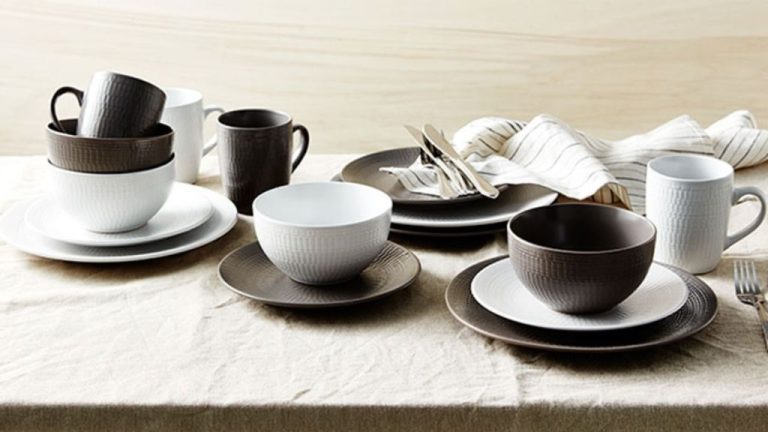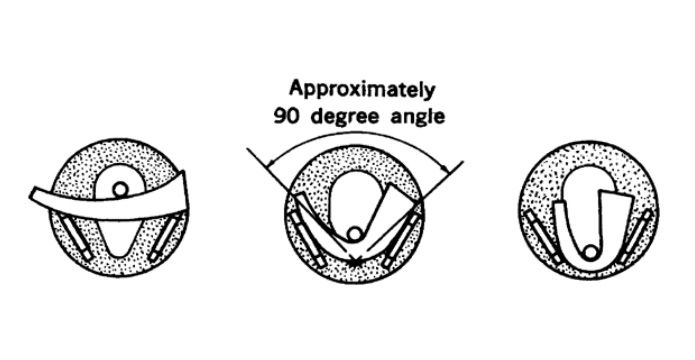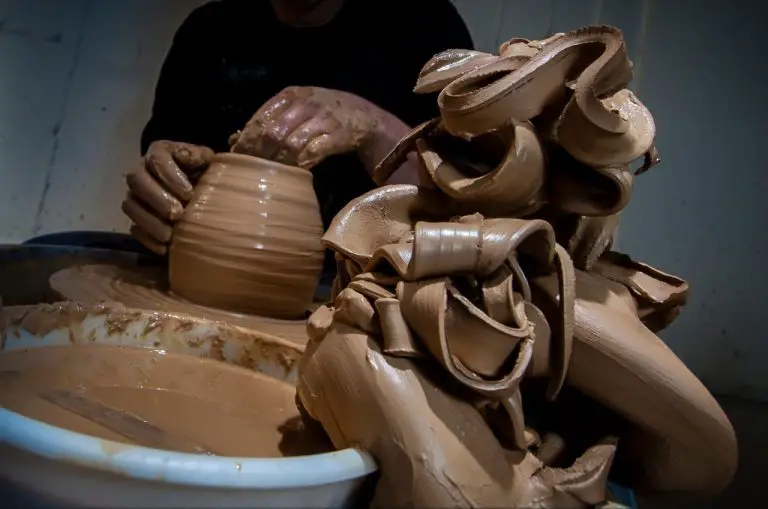What Clay Do Professional Sculptors Use?
Sculpting is one of the oldest art forms, dating back to prehistoric times when early humans shaped figures and forms out of stone, clay, and other malleable materials. The act of sculpting allows artists to give physical form to their imagination and creativity. Over thousands of years, sculptors have used different techniques and mediums to create three-dimensional works of art that adorn public spaces, museums, and private collections around the world.
Clay is one of the most popular and versatile mediums used in sculpture. The malleable nature of clay allows it to be pushed, pulled, rolled, and formed into endless shapes and textures. For millennia, sculptors have appreciated the responsive tactile qualities of clay and its ability to capture fine detail. There are many types of clays available for sculpting, each with their own characteristics. Professional sculptors carefully consider the properties of the clay when choosing which type to work with for a given project.
In this article, we will provide an overview of the major categories of sculpting clay and discuss their specific qualities and uses. Understanding the range of modeling, polymer, oil, and wax-based clays enables sculptors to select the ideal material to bring their creative visions to life.
Clay Properties
Clay is valued by sculptors for its unique physical properties. The key properties that make clay ideal for sculpting include:
Plasticity – This refers to clay’s ability to be molded and shaped without cracking or crumbling. More plastic clays are easier to work with.
Durability – After drying and firing, clay becomes hard and durable. Sculptures made from quality clay will last for many years.
Workability – Workable clay is smooth, flexible, and responsive to sculpting tools and techniques. Less workable clay can be difficult to form detailed shapes.
More plastic and workable clays are easier to sculpt intricate details. However, extremely soft clay may not hold its shape as well. Less plastic clays are harder to sculpt smoothly, but may provide more structure. The ideal clay offers a balance of plasticity and sturdiness.
Natural Clay
Natural clay is derived directly from the earth through mining and processing of raw minerals and materials. There are several types of natural clay that are commonly used by professional sculptors:
Earthenware – Lower-fired clay that is porous and brittle. Good for sculpture that does not require high durability. Available in various colors and textures like terracotta. Often used for pottery.
Stoneware – Clay that is fired at high temperatures to harden it and reduce porosity. Stoneware has good strength for sculpting and resists moisture. It has a grayish color unless pigments are added.
Porcelain – A smooth, white, translucent type of clay made from kaolin. Porcelain can be delicately sculpted and fired at very high temperatures to become durable and weather resistant.
Oil-Based Clay
Oil-based clay is made from clay minerals mixed with linseed oil or mineral oil. The addition of oil makes the clay less sticky and moist than natural clay. Oil-based clay is smooth, easy to work with, and holds fine detail well. Brands like Plastilina and Roma Plastalina are popular oil-based clays used by professional sculptors. The finished sculptures retain their shape and do not dry out or become brittle over time. Oil-based clay is resistant to shrinking and cracking compared to natural clay. It also requires less armature support for large sculptures. The downside is that oil-based clay leaves oily residues on hands and sculpture tools. Proper cleanup is required after sculpting sessions. Overall, oil-based clay strikes a nice balance between the sculptability of natural clay and the stability of polymer clay. This makes it a popular choice for serious sculptors looking to create detailed, durable clay sculptures.
Polymer Clay
Polymer clay is made from plastics like vinyl or cellulose. It is very soft and malleable, making it extremely workable for sculptors. Unlike natural clays, polymer clay does not harden until it is baked in an oven. The baking process causes the plastics to undergo a chemical reaction and permanently harden.
Polymer clay can be conditioned and reused indefinitely. It doesn’t dry out when exposed to air like natural clays. The ability to rebake polymer clay makes it excellent for sculptors to modify designs or repair imperfections. It comes in a wide variety of vibrant colors that do not fade or discolor over time.
Sculptors choose polymer clay for its versatility, workability, and ability to capture fine detail. Many top sculptors use brands like Sculpey or Fimo for their modeling projects. The lightweight nature of polymer clays also makes them ideal for sculptures that require strength and durability. Polymer clay has opened up new creative possibilities for professional sculptors with its advanced properties and characteristics.
Wax-Based Clay
Wax-based clay is made from clay mixed with wax. The addition of wax makes the clay easy to shape fine details that would be difficult in other clays. It also keeps the clay from drying out too quickly. Wax-based clay remains malleable for longer periods of time than polymer or epoxy clays.
Sculptors often use wax-based clay for making detailed miniatures, jewelry pieces, and other small sculptures. Unlike some other clays, wax-based clay doesn’t require baking or firing to harden it. The finished pieces can simply be allowed to air dry.
Popular brands of wax-based clay include Chavant and Roma Plastalina. The clay is available in a variety of colors. Additives can also be kneaded into the clay to create custom colors and effects.
The main downside of wax-based clay is that pieces made from it are relatively fragile and brittle once dry. The clay can also melt if exposed to high temperatures. So wax-based clay may not be suitable for sculptures intended for outdoor display.
Epoxy Clay
Epoxy clay is a two-part clay that hardens through an exothermic chemical reaction when the two parts are mixed together. This makes epoxy clay popular for patching and repairing sculptures. Once fully cured, epoxy clay is very hard and durable.
The two parts of epoxy clay are an epoxy resin and a hardener. The epoxy resin acts as the base, while the hardener causes the resin to harden. By controlling the ratio of resin to hardener, sculptors can adjust the cure time and hardness of the final clay.
Epoxy clay is often used to fill cracks, gaps, and holes in sculptures. It can be molded into the desired shape before hardening. The clay will bond firmly to the surrounding material. Once hardened, epoxy clay can be sanded, drilled, tapped, machined, or painted just like the original sculpture material.
Compared to other clays, epoxy clay has high strength and durability. However, it also has a short working time before it begins curing. Epoxy clays are toxic before curing, so sculptors must work carefully and clean up thoroughly. The fumes given off while curing can also be irritating.
Choosing Clay
When selecting clay for sculpting, artists consider several factors based on the type of sculpture they want to create and the properties they desire.
If sculpting a small, intricate piece with fine detail, a polymer or wax-based clay is often preferred for their plasticity and ability to hold shape. Polymer clays like Sculpey and Fimo can be molded smoothly, capturing subtleties. Wax-based clays are also very malleable and responsive to sculpting tools.
For larger sculptures, pottery clays like stoneware or porcelain are common choices. Their natural finishes and ability to be fired in a kiln make them ideal for creating lasting ceramic sculptures. The plasticity and firmness of stoneware or porcelain enables sculpting on a bigger scale.
If wanting a clay that can be worked smoothly, oil-based or polymer clays have a soft, flexible texture. For sculpture requiring strength and structural integrity, natural pottery clays high in minerals perform better. The desired finish also impacts choice – polymer clays cure to a matte look, while porcelain fires to a smooth, glassy finish.
Sculptors also consider longevity, especially for public art or outdoor sculpture. An epoxy or stone-based clay able to withstand weathering may be chosen over oil or wax-based clays in those situations.
With many options available, professional sculptors select clay based on their artistic vision, the sculpting process, and the environment the finished piece will inhabit. Testing different clays is key to finding one with the right properties for a given sculpture.
Working with Clay
Once you have chosen the type of clay for your sculpture, it’s time to start shaping and crafting your artwork. Proper tools and techniques are necessary for working with sculpting clay effectively.
For shaping and smoothing clay, sculptors use metal tools like loop tools, wooden modeling tools, and rubber shapers. Loop tools have a variety of looped wire ends for smoothing curves, making indentations, and refining details. Modeling tools resemble paint brushes with flat, round, or angled wooden tips. Rubber shapers have silicone tips for smoothing fingerprints and imperfections. Metal ribs can scrape away excess clay. A simple bamboo skewer is great for making holes and details.
Sculptors also utilize wire armatures and clay modeling stands to support the structure of their sculptures. An armature made of wire mesh, rebar, or bendable aluminum wire provides stability for figures and allows attachment of different clay parts. Spinning modeling stands rotate as you work for easy sculpting access.
To create textures, sculptors can press molds, stamps, or found objects into the clay surface. They also utilize metal tools to carve patterns and designs. For smoothing, water or mineral spirits are applied to soften the clay. A heat gun warms and blends clay sections together.
Proper sculpting tools and methods allow artists to bring their visions to life in clay. With practice using the key tools and techniques, sculptors gain full control over the clay medium.
Conclusion
Sculptors today have access to a variety of clays, each with their own properties and advantages. The most popular and widely used clays include natural clays like stoneware or porcelain, oil-based clays like plasticine, polymer clays like Sculpey or Fimo, wax-based clays, and epoxy clays like Apoxie Sculpt.
When choosing a clay, key factors to consider are workability, strength when dry, finishing properties, availability, and safety. Sculptors should select a clay that suits their skill level, desired finish, and sculpting application. For example, polymer clays are great for small sculptures and jewelry making, while stoneware clays are better for large, robust sculptures.
Looking ahead, new sculpting materials are being developed to improve properties like strength, lightness, and durability. Some futuristic clays use advanced polymers, geopolymers, or nanomaterials to create lightweight and ultra-strong sculptures. While traditional clays will continue to be used, innovations in materials science are opening up new creative possibilities for sculptors.



